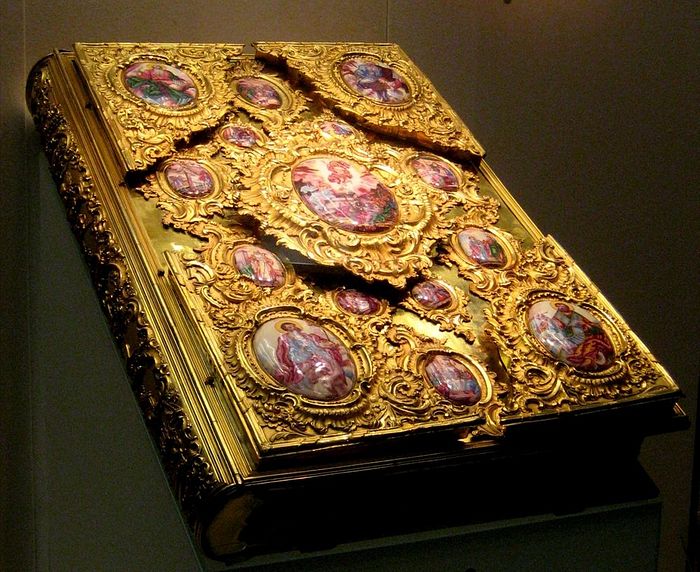Source: Pastoral Ponderings
January 31, 2016
The very notion of the “Gospel,” the Evangelion, lies so deep in Christian memory that it takes on a tautological quality, as it were: The Gospel is the Gospel. The “idea” of it is so integral to what we mean by “Christian” that the two concepts can hardly be dissected. We know that the Evangelion has component parts, but these are so structurally intertwined that isolating them for analysis is nearly impossible and never convincing.
So how do we go about identifying the Evangelion? Probably we should identify the source of the word, the literary place where the early Christians found the idea. That source was the Greek version of Isaiah 40:9: “Ascend a high mountain, you evangelizer (evangelizomenos) of Zion. Raise your voice in strength, you evangelizer (evangelizomenos) of Jerusalem.”
It is significant—it is essential to observe—that the form of the word in Isaiah is a participle (of the verb evangelizo, traditionally rendered “to spearl glad tidings”). When we speak of the Gospel, then, we should think in terms of a verb. (The underlying Hebrew word is also a participle: m-vashereth.) The evangelion is a living and dynamic proclamation. The content of its message is inseparable from its power. Its “idea” itself is an action. The Gospel, according to an early evangelizer, is “the power of God and the wisdom of God” (1 Corinthians 1:23).
The Isaian reference to the evangelion is not incidental to the theme of the larger section in which it appears. The second or middle section of the Book of Isaiah (chapter 40-55) is, in fact, thematically concentrated on the “glad tidings” of God’s new and final appearance, to give deliverance of His people.
The author even describes it as a renewal of the Exodus. As when ancient Israel first marched into the desert, he promises, “The Lord (Adonai, YHWH) goes before you, and the God of Israel (Eloei Israel) is your rear guard” (52:12; cf. Exodus 14:19-20). Once again, “water will flow from the rock for them” (Isaiah 48:21; cf. Exodus 17:5-7; Numbers 20:8-11). As the Lord, in the Sinai desert, sustained His people of old, so now, as well, “They shall not hunger nor thirst” (Isaiah 49:10). Once more the Lord “will feed His flock like a shepherd. He will gather the lambs with His arm and carry them in His bosom. He will gently guide those that are with young.” (40:11).
This message is the evangelion of Isaiah 40-55. The author of these texts, who “was introduced most deeply into the mysteries of God’s grace” (am tiefsten in Gottes Gnadengeheimnisse eingelassen wurde—Von Balthasar), prophesied nothing less than the personal arrival of the Lord, the God of Israel, coming to redeem His people.
To declare this message, said the prophet, the Lord assigned a special herald: “The voice of someone crying out in the desert (en tei eremoi): ‘Prepare the way (hodos) of the Lord. Make straight the pathways of our God'” (40:3). The early Christians were not in doubt whose voice this was; all four gospels identify it as that of John the Baptist (Matthew 3:3; Mark 1:2-3; Luke 3:4-6; John 1:23).
And whose arrival does John the Baptist announce? Isaiah already identified Him: “The Lord . . . our God”— Adonai . . . Eloheinu, the very “Lord” confessed in Israel’s Sh’ma’ (Deut. 6:4). The four gospels, by citing Isaiah 40:3 at the beginning of their accounts, declared that the advent of Jesus was the fulfillment of the Isaian prophecies. With the arguable exception of the Book of Psalms, no part of the Old Testament was more important to the New Testament Christians than these central chapters of Isaiah.
And here, perhaps, we stub a hermeneutical toe on the edge of an irony: This middle section of Isaiah is utterly dominated by a monotheistic accent; the rock-base of its message is, “I AM, and there is no other” (Isaiah 43:11; 45:5-6; 46:9). The saving and redeeming Lord is the only God.
If we keep this fact in mind, it is instructive to observe how easily and readily the early Christians (along with, a bit later, the gospel writers) identified Jesus with this God, the “God in our midst”—Emmanu-El—foretold by Isaiah. Think on this: the first Christians—Jews all—who regularly recited Israel’s Sh’ma’, apparently feeling no strain on their strict monotheistic conviction, and without significant dissent among their membership, begin to include a human being, Jesus of Nazareth, in their prescribed and official references to the God revealed in the Burning Bush. How, for heaven’s sake, did this come to be?




